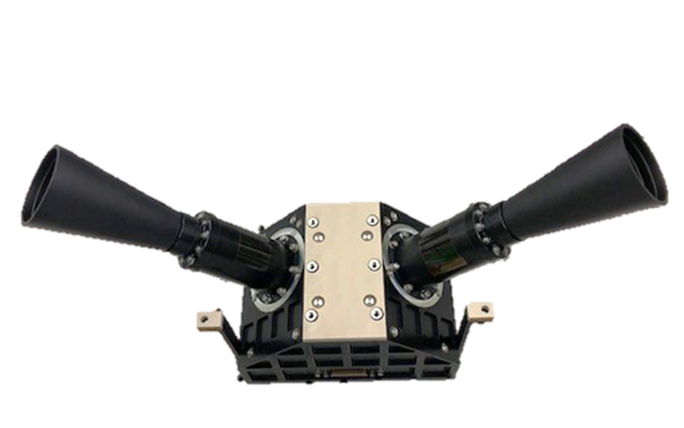PolCam, a Wide-angle Polarimetric Camera, is onboard the Korea
Pathfinder Lunar Orbiter to investigate the lunar surface based on
polarimetry. PolCam will construct a global lunar map of polarimetric
parameters. Polarimetric maps allow us to understand the physical
characteristics of the lunar surface, such as grain size and porosity.
PolCam will measure the polarimetric properties of the lunar
surface including those of the far side for the first time. Systematic
polarimetry of the Moon has been performed using only ground-based
telescopes on Earth. The median size of surface particles and their
internal opacity can be estimated from polarimetric measurements.
However, observations from Earth have inherent limits of available phase
angle, resolution, and observable area of the Moon. To overcome these
limitations, the KPLO/PolCam will observe the surface of the Moon from
lunar orbit.
 PolCam's optical unit (Credit: KARI/KASI)
PolCam's optical unit (Credit: KARI/KASI)
 PolCam's electronics unit (Credit: KARI/KASI)
PolCam's electronics unit (Credit: KARI/KASI)
PolCam will construct a global lunar map of polarimetric parameters,
such as maximal polarization (Pmax) and titanium distribution using
three color bands centered at 320, 430, and 750 nm. PolCam’s twin
cameras are mounted at 45° tilt angles from the nadir across the orbital
track in opposite directions.
PolCam will obtain polarimetric measurements of sunlight scattered by
the lunar surface at various phase angles up to ∼140° to achieve the
scientific goals during the mission. Since degree of linear polarization
is a function of phase angle, it is essential to perform several
measurements at various phase angles to properly retrieve, e.g., Pmax,
Pmin, and the inversion angle, αinv.
